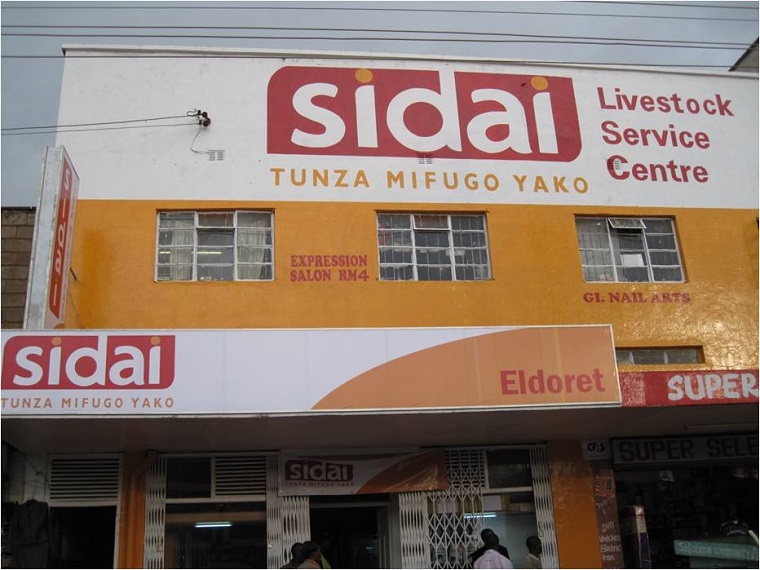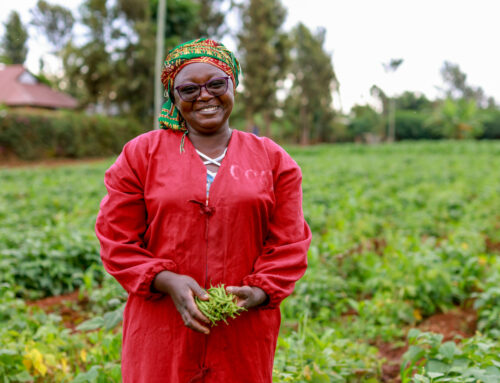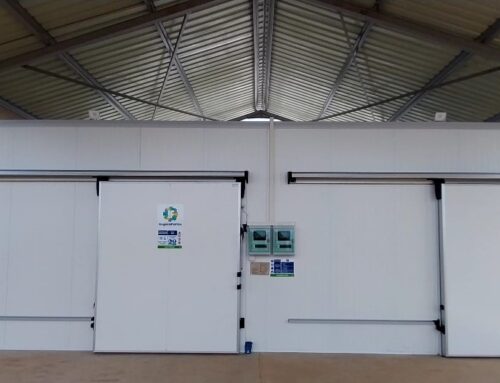Christie Peacock is the Founder and Executive Chairman of Sidai Africa Ltd. Christie is an animal scientist and former Chief Executive of FARM-Africa. She has worked in agricultural development in Africa and South East Asia for over 30 years. She is a founding member of the All Party Parliamentary Group for Agriculture and Food for Development and is a member of the Guardian newspaper’s Global Development website Advisory Panel. Dr Peacock was awarded a Honorary Doctorate from the University of Reading and selected as an Ashoka Fellow in 2011.
1. What is Sidai?
Sidai is a company that aims to open up access to good quality agricultural inputs and services to farmers and livestock keepers across Kenya, and in the future to expand into the broader East Africa Region. Farmers face many challenges in getting access to quality inputs, reliable technical information, and on-farm services, including advisory and training services. Sidai aims to sort out this problem for farmers by enabling them to farm successfully and more profitably, and in turn, to improve the life and welfare of these farmers’ families. We have a strong emphasis on livestock keepers, and that includes commercial poultry farmers, dairy farmers as well working with pastoralists in the remote dry parts of the northern and southern Kenya who keep camels, sheep and goats. So we have a broad range of customers, based in remote places as well in higher potential areas as well.
2. What types of customers do you target?
We target all farmers in Kenya, with an ambition to work with the poorer farmers and livestock keepers, as well as those in remote areas that do not have access to reliable inputs and services. These farmers are very strong in the northern part of Kenya, where the private sector barely exists on the input side. That region is dominated by competing products coming from neighbor countries, as well by strong donor-funded interventions that are very short-term in nature. So we are trying to build a business that is commercially successful but that serves the needs of farmers in remote locations, and as well in the more commercial farming areas of Kenya.
3. What led you to target that market segment?
So we want to be commercial, but we are a social business that wants to have a social impact. If you want to do that, you need to work in the most remote areas and the more frontier markets, where the private sector does not exist or barely exists. We are always pushing the boundaries of the market, opening up access to people who do not have sustainable access to the inputs and the technical knowledge and advice they need to succeed with their farming and their life-stock keeping. So we work across this spectrum and we have a cross-subsidy element from richer farmer to poorer farmers, which enables the company to operate in the less commercial areas. But where we see that huge long-term potential is yet to be exploited and so we expand to the more commercial areas of the country and commercial farmers and the more underserved communities.
4. What led Sidai to expand its service offering to include providing cold chain services (dairy chilling) and others?
We have always had a cold chain element in the business because we are very strongly promoting the vaccination of livestock, and that requires a cold chain. In fact, it requires multiple kinds of cold chain because some vaccines require freezing, some others require refrigeration, and others even require liquid nitrogen. So we have that element in the business because we are strongly promoting preventive healthcare—rather than reactive treatment to diseases. We are very interested in helping farmers access higher value markets, so we were very interested in the dairy sector, and interested in exploring a kind of a new Sidai business hub, that offers both input services, as well as milk chilling services. And this is what we built recently in Thika, with the support of InspiraFarms. This is a new initiative for Sidai. At the moment it’s just outside Thika, which is a higher potential area, but it is a demonstration unit of the kind of facility that we could see playing a big role in the more remote locations where Sidai has more activity.
5. What are the main challenges you have in working with that specific market?
I see two main challenges. In the higher potential areas, considering we work in a poorly regulated area, farmers are used to poor quality products being sold by unqualified people. They are not used to paying for good quality products and learning about how to use these products correctly. So you are trying to hedge your market that is extremely price-sensitive and not very quality conscious. Demonstrating to farmers the value that we can add at their farms requires time. It requires investment to demonstrate the added value of following Sidai’s advice and using Sidai’s products and achieving much better results as a result of doing that. In the more remote areas, you often find the short-term emergencies and the short-term donor interventions, and so people sometimes are less willing to pay. They may wait for a donor intervention, and particularly on the vaccination side, people tend to wait for the government to vaccinate the animals rather than them paying for the vaccination services. So these are the challenges we face when we try to encourage behavioral change in our customers.
6. What are the key characteristics of your customer base?
Price sensitivity and hunger for information but they don’t always get good reliable information so they are not as informed as they should be. Sidai supports customers to be better informed. Our clients rely on their farming and their livestock for their livelihood. There is some range of individual characteristics, some are more eager to adopt new technologies and ideas while others are more conservative. But all of them have a lot to learn around improving the management of their crops and livestock.
7. What strategies are you implementing for reaching your target consumers?
We mostly do face-to-face marketing, with field-based staff that can do farmer training mostly through farmer groups, cooperatives. Occasionally, on an individual basis, we also do marketing through branding, through our shops, and by attending farming shows. We are planning to do more local radio marketing. We use very local-level marketing approaches, very grassroots [with a focus on] face-to-face relations, as we want to build the brand that farmers feel very close to and that they trust and that’s is close to their farm, and they don’t feel distant about.
8. What are your main market channels for reaching your consumers?
We have multiple sales channels. We sell directly to farmers through our own shops and through our field staff. We have franchises, which we sell to, and we have our own big wholesale business about 600 small shops in more remote areas. We also sell directly to dairy cooperatives.
9. How have you foreseen company sustainability?
We are on our way to becoming profitable. That was always in the original business plan, and we are on track according to the original plan. We knew it was not going to be a quick route to profitability because we are working with low-income farmers and we are also working with a low-margin business. And so, you need drive yourselves, to grow your sales and volumes in order to improve your margins.
10. What recommendations would you give to other entrepreneurs that aim to market to and do businesses with low-income populations?
Understand your markets: what your customers currently do and their current behaviors. It’s important to not underestimate the challenge of getting a behavioral change, as well as the time it takes and the resources that it takes. It’s important also to get investors and partnerships that share your long-term vision and that have the patience to achieve significant change. People working in these kinds of markets–that by definition are markets that are not working—and if you are a small company or a start-up, just because you are doing the right thing doesn’t mean that you’ll succeed, unless that you have the right commercial elements in place. That takes time, you may often adapt your business model, either in a big way or with a tweak. For instance, our dairy hub developed with InspiraFarms was not in the original plan, but we strongly believe will be hugely successful and it will become a big element for the future of Sidai. Don’t be afraid of being honest enough to adapt and change as you gain experience.



